Last-Minute NYC Holiday Gift Guide 🎁
We’ve created a holiday gift guide with presents for the intrepid New Yorker that should arrive just in time—



Image from Wikimedia Commons, Library of Congress
A key catalyst to the formation of the New York City Landmarks Preservation Commission was the demolition of the original Pennsylvania Station in 1963. The new body made it its mission to protect New York City’s architecturally, historically, and culturally significant buildings and sites by granting them landmark or historic district status, and regulating them once they were designated.
Looking back in history, here are ten controversial redeveloped landmark or historical buildings in New York City, as a reminder of the constant push and pull between landmarking and development.
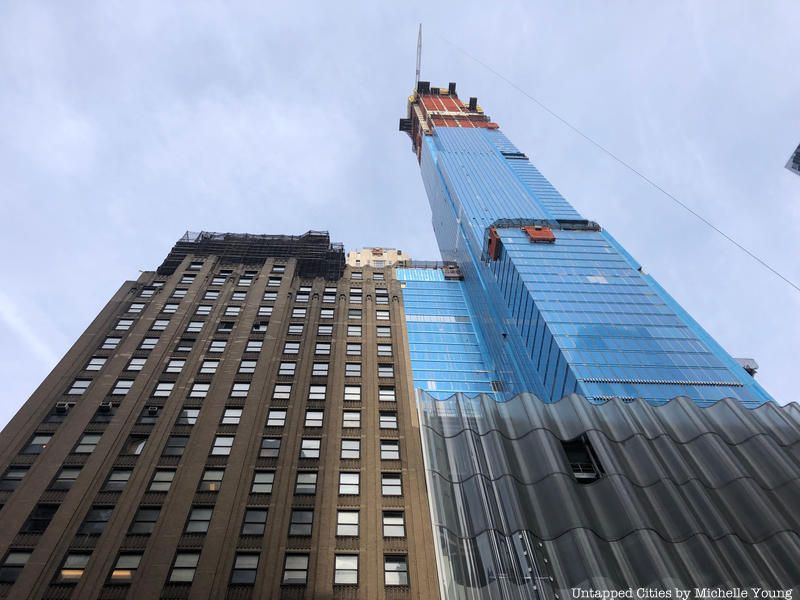
When the Central Park Tower (formerly known as the Nordstrom Tower) is completed in 2019, it will be one of the tallest buildings in New York City. This skyscraper will be anchored by a seven floor Nordstrom department store and a hotel, with the rest of building occupied by private residential units. Unlike most new skyscraper developments in New York City, the Central Park Tower did not replace a previously landmarked building but it borders the landmarked Art Students League of New York building which has existed in the same state for over 130 years.
No structural augmentations will be made to the physical historic site but the developers of Central Park Tower bought all the air rights above the Art Students League Building, a process that was approved by a large margin of league members. Developers will also cantilever a portion of the tower over the art building. Though the two buildings won’t touch, the visual overlap has led many critics to speak out about the imposition on the landmarked building.
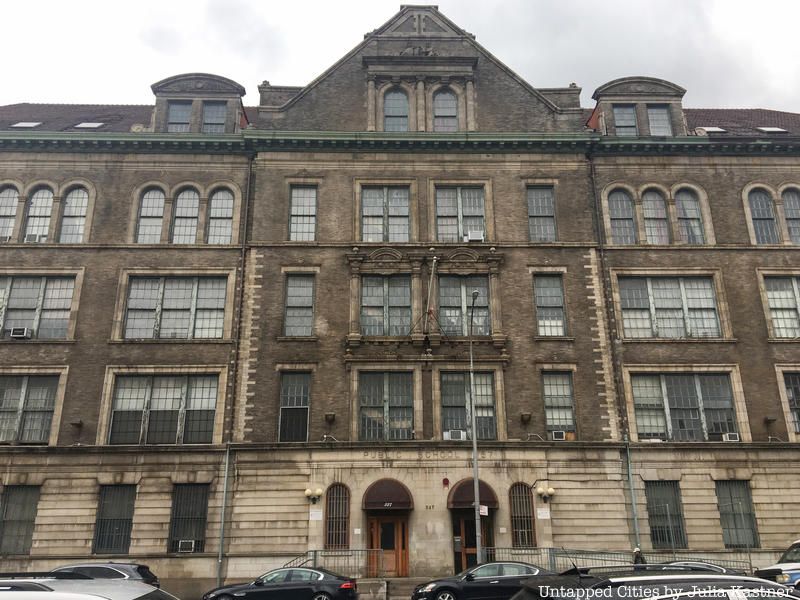
P.S. 157 in Harlem was originally built in 1889 by prolific school architect C.B.J. Snyder. The school shut down in 1975 and plans to turn it into affordable housing began shortly thereafter. The building was landmarked in 1982. Developers were granted $2.2 million from the Federal government, $2.8 million via a loan from the city and $964,000 from the Community Preservation Corporation, along with a bonus $900,000 government loan devoted to remove asbestos in the building. Doing the math, each of the 73 apartments in the building cost $110,000 in 1993 dollars, more than double the average rehabilitation cost for historical redevelopment projects.
At the time, a single bedroom apartment in the building rented for roughly $500 a month, but currently an average one bedroom one bath is at over $2,300 (though some units are rent stabilized). Developers maintain that current increased prices are based on recent renovations and the rise in property value in the area. Critics have contended that historic members of the neighborhood should occupy this newly renovated building, instead of more wealthy residents who have been out-priced by new developments south of Harlem.
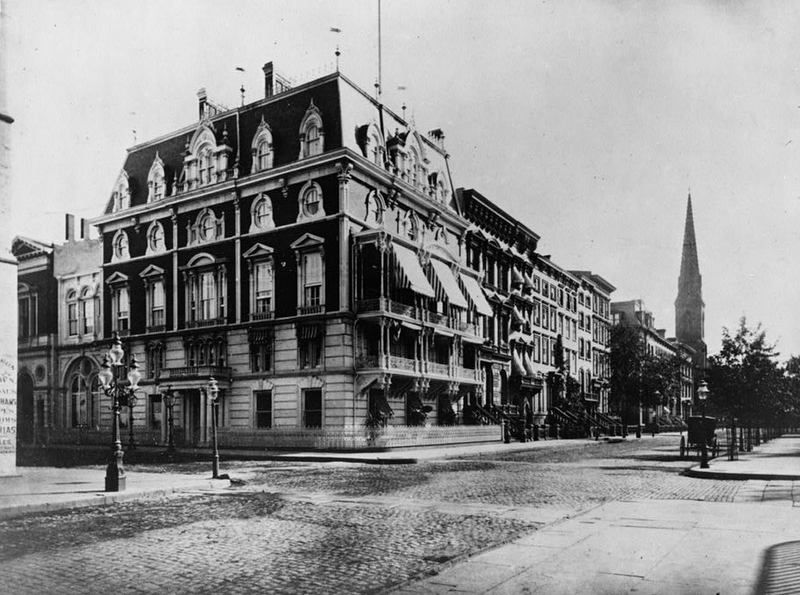
The Jerome Mansion at Madison Square Park. Image from Library of Congress.
The Leonard Jerome Mansion was a Gilded Age mansion completed in 1865 and one of the first buildings landmarked under the new preservation law in 1965. Built by a business associate of Cornelius Vanderbilt, himself a builder of lavish mansions, the Leonard Jerome Mansion was located on the east side of Madison Square Park. Controversy ensued soon after designation, as new owners claimed financial hardship under a clause of the landmarks law. After no buyers were to be found, building demolition permits were issued. The Leonard Jerome Mansion was then replaced by the New York Merchandise Mart, designed by architects at Emery Roth and Sons.

In 1967, the Singer Building, once the tallest in the world, was the tallest building ever to be demolished. It remains to this day the third-tallest building ever to be destroyed after the World Trade Center towers. The Singer Building was sold in 1961 by the Singer Company to US Steel, a few years before the creation of the Landmarks Preservation Commission and was never granted landmark status. Prior to demolition, extensive photo documentation of the lobby was done before demolition which we fortunately still have today at the Library of Congress. The Singer Building was replaced with the US Steel Building (now One Liberty Plaza) which still stands today.
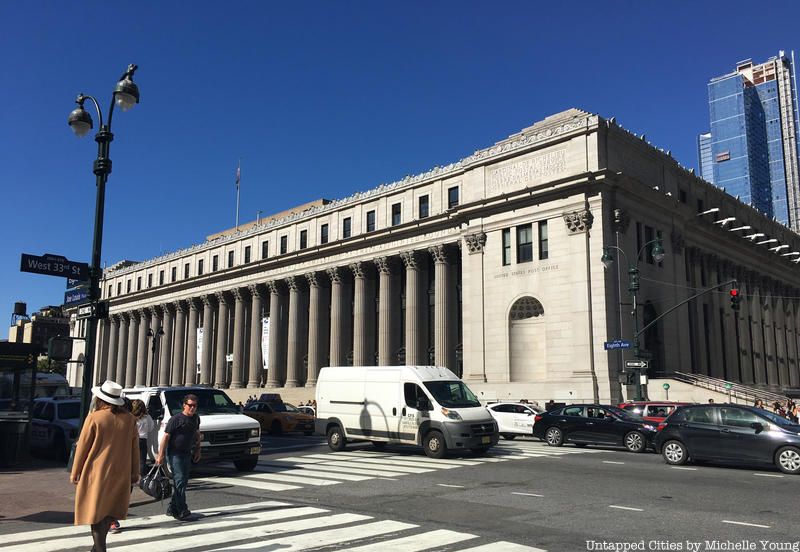
Governor Cuomo recently unveiled the sixth signature proposal of his 2016 agenda: to transform Penn Station and the historic James A. Farley Post Office into a “world-class transportation hub.” The project, known as the Empire State Station Complex, would feature significant passenger improvements, including so-called first-class amenities, natural light, increased train capacity and decreased congestion, and improved signage, adding to the plans underway to make the post office into an Amtrak station. The project is anticipated to cost $3 billion, to be expedited by a public-private partnership in order to break ground this year and complete substantial construction within the next three years. The James A. Farley Post Office was designated an exterior landmark in 1966, but has not been landmarked in the interior. Time will only tell what changes are in store.
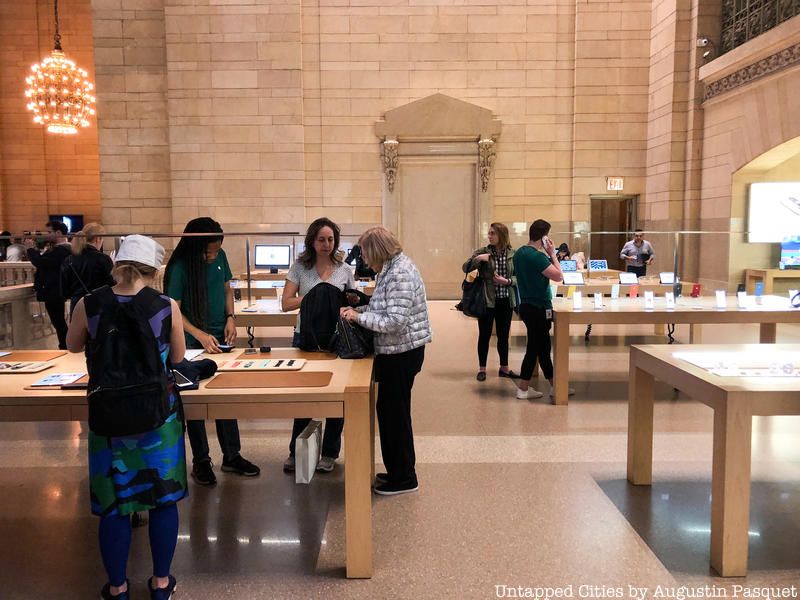
Apple Stores are as much about the gleaming technological devices as the architecture that surrounds the products. Many critics and consumers have praised Apple for the conversion of the building on 401 West 14th street in the Meatpacking District and the opening of a store in the main concourse of the landmarked Grand Central Terminal. So far, Apple has managed to retain and revitalize historical architecture contextually, while maintaining brand identity.
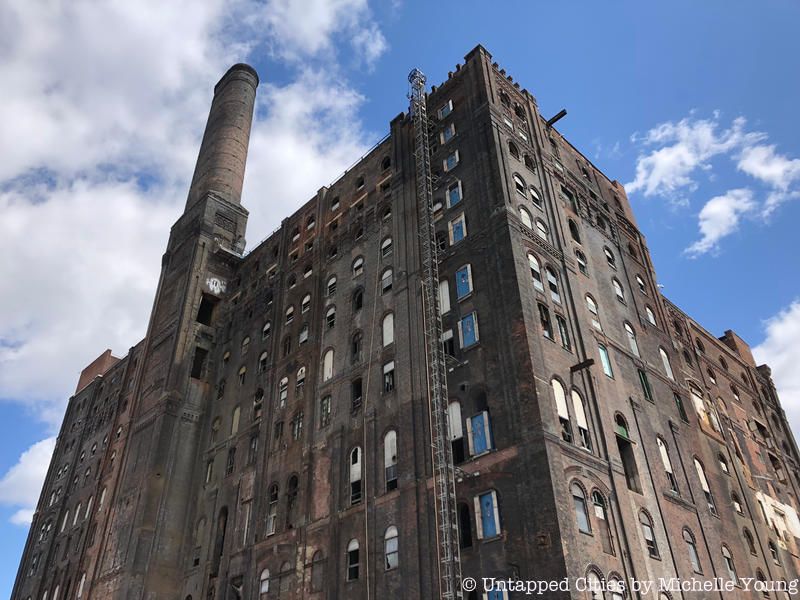
The four-million square foot multi-use development at the foot of the Williamsburg Bridge has had its share of controversy, but we believe the Domino Sugar Factory development will be one of the most unique along the Brooklyn waterfront when completed. Two Trees, the second developer to take on the site, completely revamped the original approved plan by a previous developer, adding notable architectural, preservation and urban planning innovations. The design by SHoP Architects is of course surprising, daring and controversial, but the Two Trees plan also involves extending the street grid back to the waterfront and retaining the historical facade of the main building. Machinery salvaged from the interior will be placed along the public esplanade.
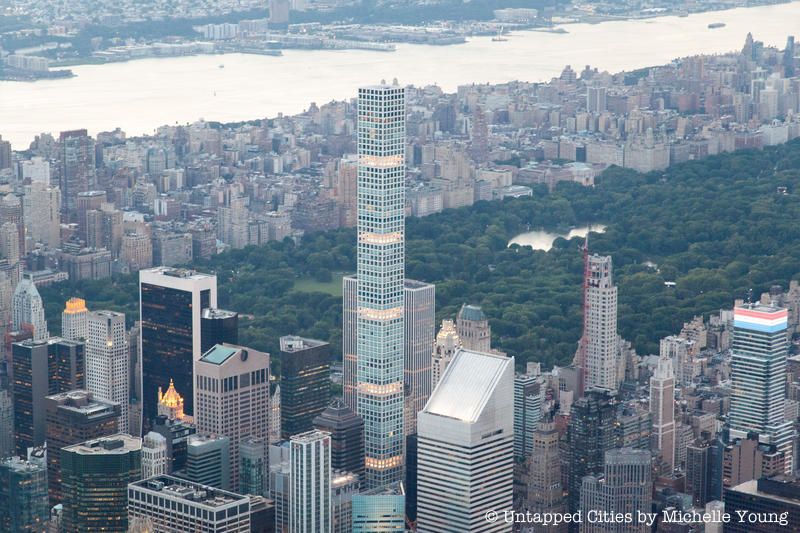
The Drake Hotel never officially achieved landmark status but before it was demolished, but it was one of the most recognizable and distinguished hotels on Park Avenue. It hosted many popular icons including Frank Sinatra, Muhammad Ali and Jimi Hendrix and was the preferred site for Led Zeppelin whenever they played in New York. It was also the site of scandals: in 1973 slightly over $200,000 was stolen from Led Zeppelin’s safety deposit box in the building.
New York City real estate developer Harry Macklowe purchased the property for $440 million in 2006. 432 Park Avenue, at one point one of the tallest residential buildings in New York City, has risen in its place.
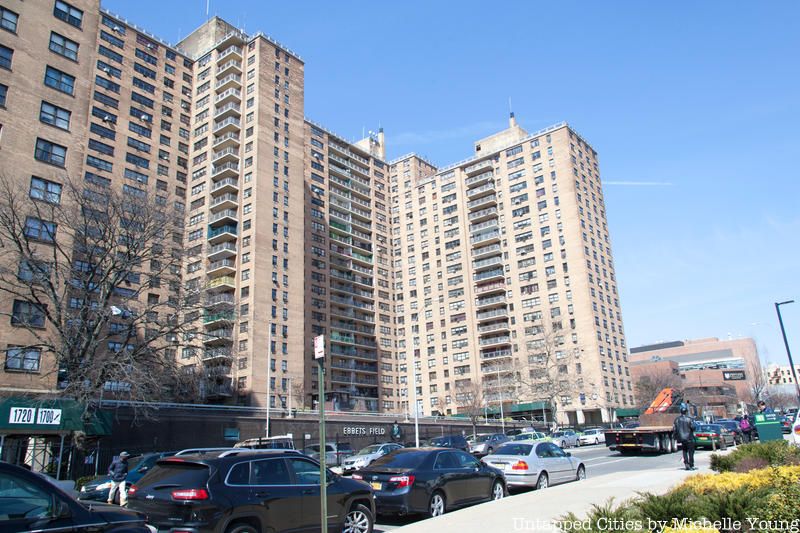
The current site of historical Ebbets Field, replaced by an apartment complex in 1962
The home of the historical Brooklyn Dodgers was demolished in 1960 just five years before the inception of the Landmarks Preservation Commission. The only preserved piece of the stadium was a portion of the original wall. In 1962 the Ebbets Field Apartments, an affordable housing complex, was completed and still exists today. The buildings are not under ownership of NYCHA, but are run by private developers. Under pressure from Mayor De Blasio to improve building conditions, the complex is undergoing renovation and has a new marketing campaign. Rental prices, seemingly high for the neighborhood and offering, range from $1,300 a month for studios to $2,500 for three bedrooms – prices people believe are driven by recent real estate pressure in the Crown Heights and Prospect Lefferts neighborhoods.

When St. Anne’s Church opened in 1852, it was among the wealthiest congregations in the city. Over the past two centuries the evolving demographics of the neighborhood caused the church to experience a drop in membership. In 2003 the Archdiocese of New York announced that the church would be permanently closed. A developer bought the building in 2005, and plans were announced for a new dormitory for New York University to be built on the site. This announcement was met with public outcry, particularly from the Greenwich Village Society for Historic Preservation.
However, without landmark status from the Landmarks Preservation Commission, St. Anne’s was demolished except for its front facade which remains attached to NYU’s Founders Hall Residence. The AIA Guide to New York City described the result of the project as a “futile exercise where no connection is made, or even attempted, between the old church and the 26-story hulk … the effect is of a majestic elk, shot and stuffed.”
Subscribe to our newsletter